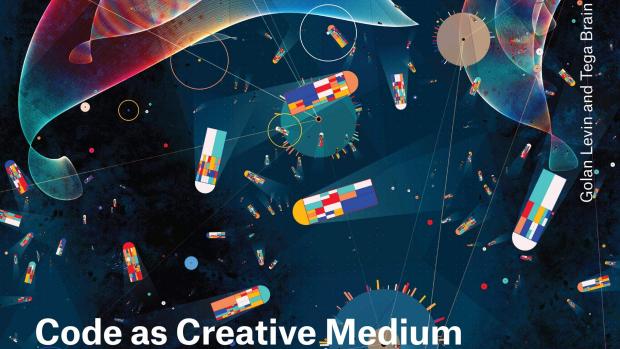A new chapter for creative coding at NYU Tandon
Tega Brain releases a book that illuminates teaching at the intersection of art and tech

Book cover for Code as Creative Medium: A Handbook for Computational Art and Design co-authored by Industry Assistant Professor Tega Brain
One day, while comparing notes on their syllabi for the upcoming semester, Tega Brain, who teaches in Tandon’s Integrated Digital Media (IDM) program, and Golan Levin, who directs the Frank-Ratchye STUDIO for Creative Inquiry at Carnegie Mellon University, discovered that they had each chosen to assign the same exercise: “the clock,” a project that would require their computational design students to develop a dynamic representation of time. In their recently released book, Code as Creative Medium: A Handbook for Computational Art and Design, they explain, “We had been educated in different countries — Golan in the USA and Tega in Australia — and yet it became clear that we shared an extensive tradition of such assignments: traded, like folk tales, by those teaching code in art and design schools around the world. These pedagogic traditions, however, were mostly absent from the programming primers on our bookshelves, which dealt above all with how to write code, rather than what to make when learning to code and why.”
Their book seeks to address that gap by providing a roadmap of sorts for artists and designers who want to work with code as a creative medium, as well as computer scientists, software developers, and engineers looking for more open-ended and expressive ways to apply their technical skills. “We insist upon the value of arts literacies within engineering spaces, and engineering literacies in the arts,” the authors write.
The volume will prove useful to anyone teaching in interdisciplinary programs like Tandon’s IDM, as it includes open-ended project prompts, some of which, like “the clock,” have proven to be perennial favorites. Another section consists of short programming exercises that hone mastery of specific technical skills — although they are “language agnostic” and can be performed by students using Python, Java, C++, or whatever programming tools they have at their disposal. (Exercise topics include Graphic Elements, Iteration, Color, Unpredictability, Time and Interactivity, and Typography, among many others.)
A final section contains interviews with a number of seasoned instructors — including IDM co-director R. Luke DuBois, Tandon Industry Professor De Angela Duff, and NYU Tisch professors Daniel Shiffman and Allison Parrish — who explore what pedagogic strategies work in teaching technical material to artists, how best to encourage artistry to students more used to technical instruction, and other questions relevant to those teaching at that important intersection.
“It’s difficult to overstate the importance of computational literacy in 21stcentury life,” Brain and Levin write. “Computer programming, once an esoteric skill in engineering and business, has now acquired broad applicability in fine arts, design, architecture, music, humanities, journalism, activism, poetry, and many other creative fields. But in the classroom, the adaptation of programming education to students with different objectives and learning styles has not kept pace.” Brain and her fellow IDM instructors are remedying that at NYU Tandon, and Code as Creative Medium can help others do the same.




